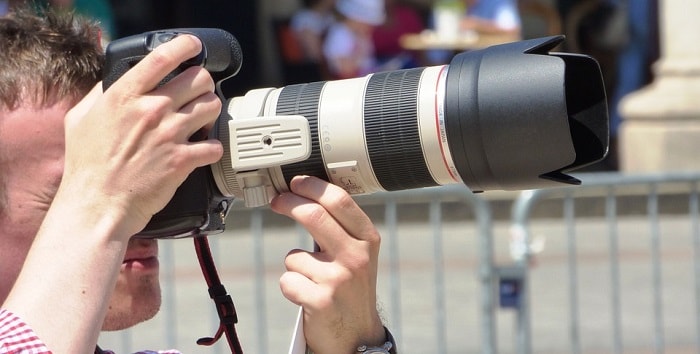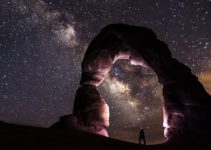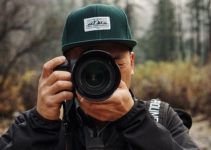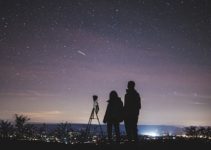What you absolutely must have to be a successful photojournalist?

Photojournalism is a great job to have. Every day is different, you are right in the center of events and – if you are in the right place at the right time with the right equipment – you can make that stunning image that goes around the world. A bit of luck helps too.
There is no upper limit on how much money you can make. Get stunning and unique content and the world will beat a path to your door. That said, it’s a fiercely competitive industry and a tough and even dangerous job at times.
- The Right Attitude
- Ultra-Reliable Transport
- The Right Cameras
- The Right Lenses
- Lights
- Power
- High Speed memory cards
- Communication
- Image processing software
- Apparel and accessories
The Right Attitude
Before we even get to equipment, take a long hard look at yourself. Are you absolutely sure that this photojournalism life is the right job for you? If so, then forget the booking holidays in advance. Forget making regular commitments. Forget the 9-5 job. You must go where the work is. You must go when the work is. That Kansas tornado doesn’t care if Thursday night is the night you go bowling with your buddies. Even a cat stuck up a tree in Memphis doesn’t keep a schedule.
The most successful photojournalists have a total commitment to what they do. So, you are going to need the right attitude and a sympathetic family or partner. One that understands what your job involves.
Ultra-Reliable Transport
If you are an international photojournalist, you’ll be on a plane a lot. But that globe-trotting photojournalist is a very rare breed these days. There are local guys who are ready and able to cover the job and the internet means anyone can pretty much shoot and send anything from almost anywhere.
More likely you will have a local area to cover. So, get an ultra-reliable 4 wheel drive SUV or Truck. You’ll need the space for your gear and you need the 4 wheel drive and the reliability to get to that location. Don’t skip on those regular services.
The Right Cameras
Don’t skimp on getting a really good DSLR like a Canon 5D package with the accessories to go with it, or Nikon D5 – or a high-end mirrorless camera, like a Sony α7R IV plus a backup camera (or two). There’s no point in being in the right place at the right time if your camera is going to let you down. Even if your camera is “good”, if there are other photojournalists on the same story and their pictures are better than yours, guess who gets to sell their pictures? It’s them, not you, right?
So don’t nickel and dime yourself on cameras. There is some sensible advice here on the best cameras for photojournalism.
What’s more, don’t forget that you might be doing moving images as well as stills. That’s the growth market today – not print magazines and newspapers, which are cutting back budgets or even closing. A still camera that does moving video and audio as well isn’t necessarily as good as a real video camera if you are doing Vlogs etc. and TV or webcast interviews are a whole different ball game.
So, that might be your third camera. Check out some ideas about the best cameras for interviews including the excellent Sony HXR-MC2500E.
The Right Lenses
This is the same story as the camera. A great camera with the wrong lens is the same as a mediocre camera. A great lens with a bad camera is the same as a mediocre lens. So, get the best lenses you can comfortably budget for. Something like a Nikon 17-35mm f/2.8D ED-IF AF-S. Once you have that, add a Canon 70-200mm f/2.8, or something similar.
Remember you don’t just need good pictures – everyone else will be doing that – you need images that really stand out from the crowd.
You must have good standards, wide and telephotos. Plus spares.
Lights
Nature is an unreliable lighting director. So, get yourself a TTL strobe, like the Godox AD200Pro, a flash modifier and/or reflector like those from Neewer and maybe a redhead or LED free-standing light kit like those from VILTROX for interviews. Get plenty of power for them too (see below).
Power
Running out of power can blow the job. All kinds of jobs can go on longer than you expect. So, have lots of extra, fully-charged batteries for everything on you at all times. Then consider something generic as further backup, like the Jackery Portable Power Station. It sucks to be running around looking for power but at least you can recharge dying batteries if you need to.
High Speed memory cards
Buy lots of fast high-capacity memory cards, like the Amplim 300MB/s 128 GB SD XC Memory Card. You might just go out on a breaking story that changes and now goes around the clock. It’s important to buy fast memory cards so that you can afford to fully use your camera’s stills burst rate and data transfer capabilities and therefore get that great shot.
Communication
If your competitor gets their picture back before you – it may not matter that yours is better because theirs is already out there. Your customers might not want to pay twice.
It follows that as well as a good mobile phone with a top-end data plan, you must get a powerful high-spec tablet which can be Windows, Apple or Android that can connect wirelessly via your phone provider’s data plan. Don’t rely on only hooking up your tablet Wi-Fi, it might not be there at all. You can’t go far wrong with an Apple iPad with Wi-Fi + Cellular or an Android Samsung Galaxy Tab A with Wi-Fi and Celluar.
Image processing software
You might need to do some high-speed image retouching or correction. Maybe your exposure wasn’t quite right. Maybe the color temperature is a bit off. Maybe there’s an object or blemish in the picture that needs to be removed.
The list of possible issues is (almost) endless.
So, get a decent color and/or paint package – maybe Photoshop or Corel PaintShop Pro. If you want some serious color correction then check out Blackmagic Design DaVinci Resolve Studio for that high-spec finish.
Look for something that has fast white balance, quick copy brushing or cloning, geometry corrections, cropping, resizing, etc. Nothing too fancy or complicated to use but enough to get that picture exactly as it needs to be.
If you are going to shoot professional video, you logically need a professional editing package too – a decent one from Apple, or Adobe Premiere Pro, Avid Media Composer 8 etc. not a cheap prosumer tool.
Apparel and accessories
Finally, you need a tough jacket or photographer’s vest, with lots of pockets and a for all this equipment. Water-resistant is good and the more the better. Don’t leave stuff back in the car as events unfold at the nuclear reactor, school, baseball stadium etc. that you find you need at the shoot.You could also get a camera harness to keep your hands free. A Camera & Laptop Travel Backpack or bag is worth getting too.
So, the aliens just landed on the White House lawn but you left your spare battery back in the car. Doh!
Take Low Gloss Gaffer tape (not the shiny kind) too – lots of it. There will be stuff you need to tape down, tape up, etc.
Summary
Great photojournalism is all about being there the “fastest with the mostest” You must have the attitude, ability, equipment and logistics to do all that. Everyone with a mobile phone can get pictures – yours need to be orders of magnitude better.






